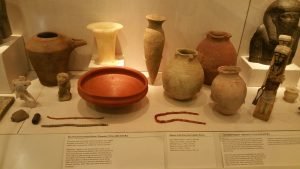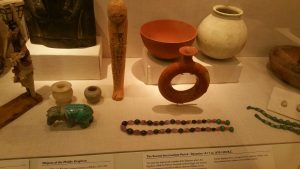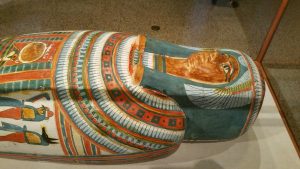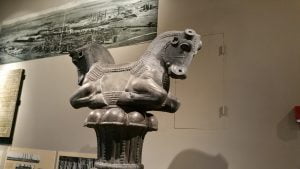
Opposite the replica of the Rosetta Stone (located in the British Museum) is a collection of Egyptian Pottery.
Approximately 2090 BC – Abraham was in Egypt – check the dates to see objects from this era
Genesis 12:10 And there was a famine in the land: and Abram went down into Egypt to sojourn there; for the famine was grievous in the land.


